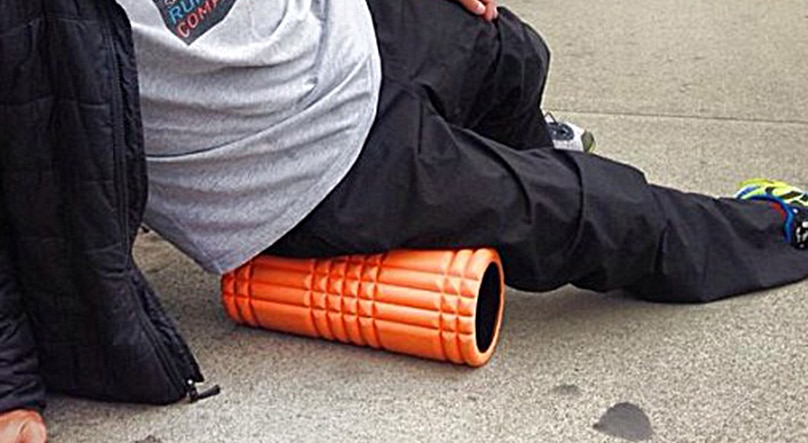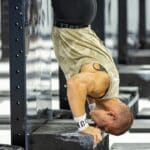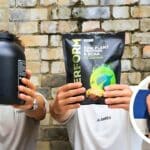We all know the head, shoulders, knees and toes song, but do you really know what holds your muscles and organs together? More importantly, why it’s so important to take care of this mystical thing called fascia? As a chiropractor and box owner, I’ve spent a lot of time understanding, treating and preventing injuries associated with fascia overuse, inflammation, and immobility. In this article, I’ll take a deep dive into what fascia is, its function, what we’re doing at CrossFit 312 to prevent fascia-based injuries and how we treat these injuries at Chicago Institute of Natural Health.
Jump to:
- What is Fascia?
- CrossFit and Fascia, an unlikely partnership.
- Is CrossFit bad for the body’s fascia?
- Fascia Do’s and Don’ts
- Make mobility a priority
- Don’t forget about proper nutrition and supplements
- Rolling the IT Band
- Smashing or rolling the Plantar Fascia
- Smashing the Psoas (the muscle that sits on our low back and attaches to the hip)
What is Fascia?
Fascia is the connective tissue that forms webs or bands beneath the skin to attach, stabilize, enclose and separate muscles and other internal organs. Fascia has the ability to move—it can contract and relax on its own. Fascia is intertwined throughout the body from the foot (plantar fascia) all the way to the eyebrows (cranial fascia), and is one of the biggest sensory organs in the human body. Which is why it’s no surprise that it’s often the main source of referral pain.
When explaining fascia and its connection to muscles, one can compare the anatomy of the body to that of an orange. The juice of an orange is self-contained in compartments that appear to be a matrix of fibers, or in our body’s case, connective tissue. The skin of the orange can be peeled off to show the connective support structures that hold the fluid in. This resembles our bodies’ fascia and is very similar to a dissection in an anatomy lab. In order to access the “juice” –our organs and muscles–large amounts of the white, maze-like fascia have to be removed.
Some people may find it easier to imagine just taking off the skin of the fruit and leaving it to dry for a few days before trying to squeeze it. You’ll probably notice that you get less fluid out of it and a lot less mobility. The same thing happens to your muscles when they are left to dry and not moved around frequently — which is why movement, mobility and hydration are important factors when it comes to keeping fascia healthy.
CrossFit and Fascia, an unlikely partnership.
As CrossFitters, we all know that feeling – the feeling that you’ve just been hit by a bus the day after an intense, exhausting workout. That feeling is fascial tightness. It occurs when adhesions form in the body due to inflammation, immobility and micro-injuries caused by overloading and stress (both physical and psychological). This leads to a pain response by the body which can radiate away from the spot of initial injury.
Based on our testing, this is the best creatine for most people. It has the perfect dosage of creatine monohydrate per serving, which has been proven to increase muscle mass.
- Promote strength and muscle gains
- Tested for purity and safety
- Creatine has no known side effects
Typically, I treat CrossFitters whose pain is located in their lower backs, hips and shoulders. Rarely do these athletes pinpoint exactly where their pain is. Instead I often hear “it hurts here and wraps around there, and sometimes goes here.” We call this referring pain, which stems from the stranglehold the fascia puts on the surrounding nerves and blood vessels.
The easiest example of experiencing fascial tightness is after a workout that involves moderate to heavy deadlifts at high repetitions, as is the case in “Diane.” Throughout the workout, the muscles become overworked, but the fascia has also taken on a heavy workload over the course of 45 deadlifts. Not only can you experience pain and achiness, but the area of fascia that’s being strained has an attachment point to fibers that travel all the way up the back and into your shoulders, decreasing your shoulder and upper spine mobility.
Fascia can also generate power and can absorb a good amount of force when asked too. The thoracolumbar fascia (located around the lower back and pelvis) can disperse force in explosive movements such as the third pull in a snatch. It can also act as a shock absorber in certain movements like descending into a squat, or the receiving position of a heavy clean. The only problem is that we can’t actively train our fascia to do all of this. Instead we just have to make sure it is free to move, hydrated and ready to go.
Is CrossFit bad for the body’s fascia?
To put it simply, no, that’s not what I’m saying at all. As a physician, I believe CrossFit is one of the best types of exercise programs you can do to help live a happy, healthy life. And as a box owner and long-time CrossFitter, I couldn’t agree more.
As long as you take the proper precautions to warm-up and keep your core engaged throughout the entire workout you will minimize your risk of injury. I’ve talked to many Regional and Games athletes who have all told me that their warm-ups for short benchmark workouts (Fran, Diane, Grace) are usually between 20-30 minutes! Imagine how much better prepared you would be as an athlete and CrossFitter if you or your box took mobility as seriously as some of the world’s fittest.
At CrossFit 312, our goal is to get our athletes primed for whatever movements they will be doing for the day. We implement a dynamic warm-up that gets the heart rate elevated first, and then goes into some coordination and agility drills that will get the muscles, fascia and central nervous system stimulated while reducing the risk of injury and increasing performance. We do a lot of skipping, high knees and backpedaling followed by handstand holds, hollow rocks and depth drops off a box to prime the body for absorbing shock and load. We also do banded pull aparts to initiate scapular retraction and shoulder mobility.
Fascia Do’s and Don’ts
Do’s:
Hydrate, hydrate, hydrate – did I get the point across? Muscles and surrounding tissues are made up of 75% water, which means they need to be constantly hydrated to avoid tissue damage. Dehydration can lead to faster muscle fatigue, friction in the joints, muscles and fascia–all of which can severely affect performance.
Tip: Aim to drink 50-75% of your body weight in ounces of water, daily. In addition, be sure to drink at least 8-16 ounces 30 minutes before your workout. Adequate amounts of water will also help speed up recovery times overall.
Make mobility a priority
– Get to class early to stretch, mobilize and utilize the movement tools at your facility prior to class. While most boxes have a set warm up, they aren’t designed to address your specific mobility issues. Grab a foam roller, a lacrosse ball and some bands – it’s your time to work out all the kinks in your muscles/fascia.
Don’t forget about proper nutrition and supplements
– a high-quality omega-3 fatty acid supplement (fish oil) is your best friend. It helps with a number of bodily functions including a decrease in inflammation, increases in cardiovascular function and promotes healthy energy levels to name a few.
Tip: I use Stronger Faster Healthier’s (SFH.com) SO3+D3 Omega-3 Oil because of its high-quality ingredients and extra dose of vitamin D.
Don’ts:
The “No pain, no gain” theory – Mobilizing isn’t always going to feel great but if you are having intense pain, burning, or other weird sensations it is best to stop and seek professional care.
Rolling the IT Band
– The IT band is a fibrous tissue, meaning it is made of hard connective tissue and is an extension of the tensor fascia latae muscle that starts at the top of our hip. While rolling this band of fascia you may notice it resembles a gravel road with lots of bumps and turns. This is because the cells that comprise the band are formed that way. There is no elasticity to the IT band at all and by rolling it out you are probably just causing more micro trauma to the tissues under it.
The Fix: Try a dynamic warm-up like a Karaoke or a side lunge to facilitate some motion into the hip joint and surrounding tissues.
Smashing or rolling the Plantar Fascia
– Doing these techniques will not make the tissue longer and will cause more pain in the process.
Based on our testing, this is the best creatine for most people. It has the perfect dosage of creatine monohydrate per serving, which has been proven to increase muscle mass.
- Promote strength and muscle gains
- Tested for purity and safety
- Creatine has no known side effects
The Fix: Barefoot walking, take a frozen water bottle and gently roll up and down the foot with minimal pressure. Use a softer ball like a tennis ball to roll the surrounding tissue and relieve some of the tension.
Smashing the Psoas (the muscle that sits on our low back and attaches to the hip)
– The Psoas can be tight on CrossFitters, but getting deep into the stomach and organs with kettlebells and other tools isn’t a good idea–especially when your biggest artery, the Aorta, is hanging out right there. It is best to see a professional to get this released properly.
The Fix: Like other physicians, I use Active Release Techniques® to fully facilitate and release the tension that builds up at my practice. Hanging from the pull-up bar for a short period will also help decompress the lumbar spine and release some of the surrounding musculature.















Great article!